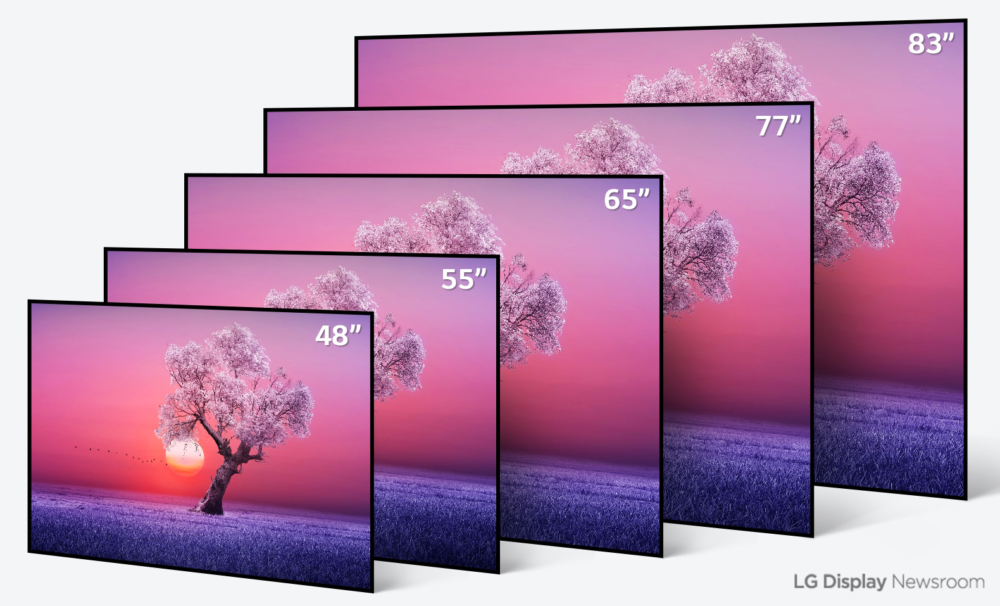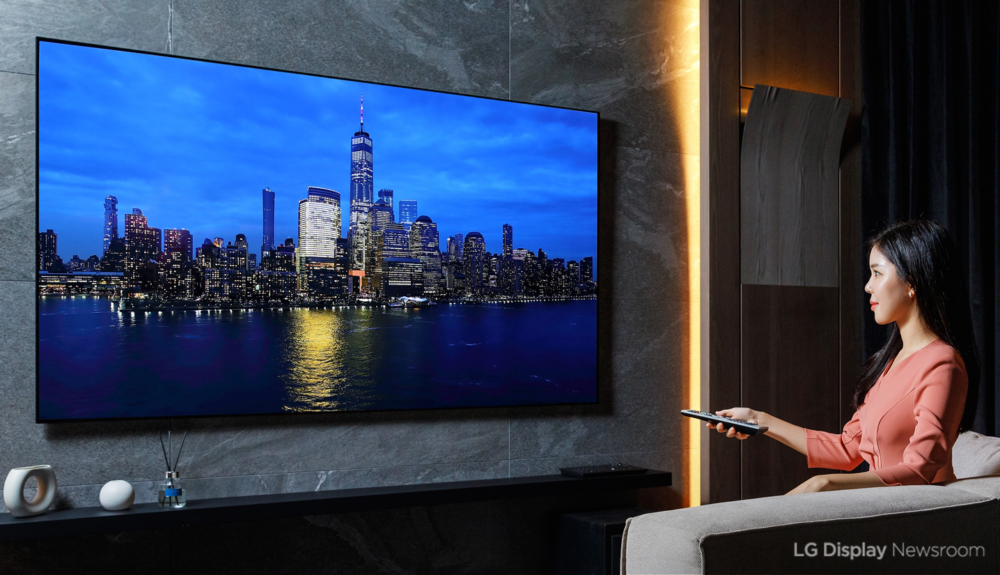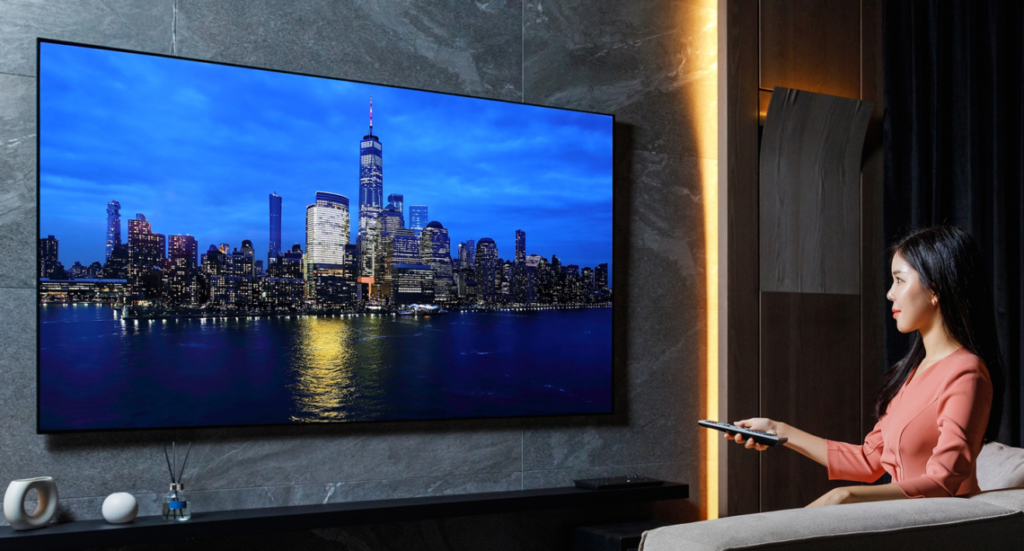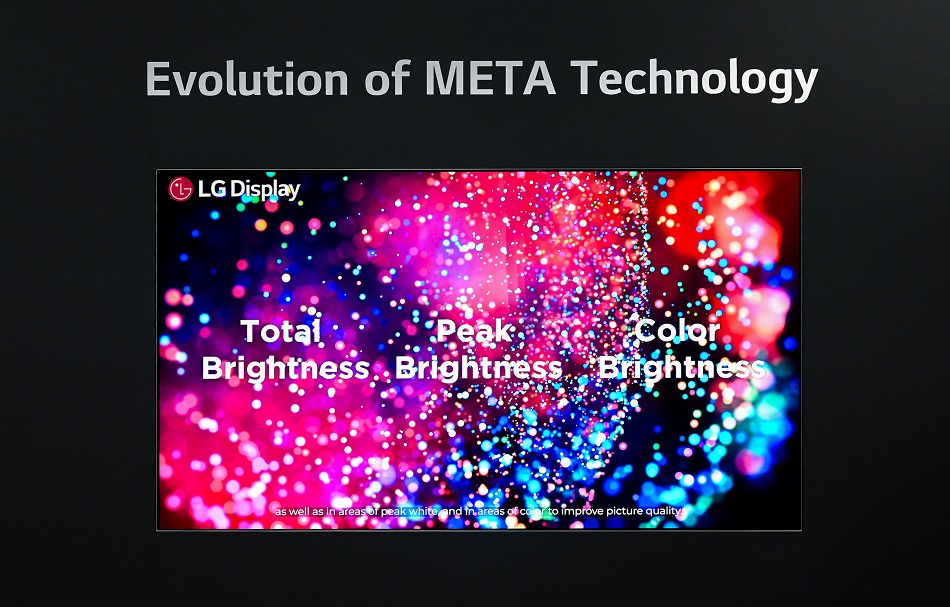By Alex Jensen –

As OLED TVs continue their march to dominance, we’re seeing a really interesting trend develop at the highest end of this technology’s mainstream appeal. And by highest end, I also mean tall and wide! Not only are more people buying OLED TVs than ever before, but an increasing number of consumers are choosing large-sized OLEDs.
TVs with a 77-inch screen or larger make up nearly one in five OLEDs sold this year, according to this recent Korean report. It shows that they took up a 17.8% share of sales in the first half of the year, up from 13.7% in 2020 and just 6.3% in 2019. Within the very biggest category of over 80 inches, OLED TVs saw a 36-fold increase in shipments as of this year’s second quarter.
So, does this mean people are choosing bigger OLED TVs at the expense of other options? We can give that question a resounding “no!” What’s happening is the diversification of the OLED TV market as it expands, with market watcher Omdia expecting OLED TV sales to reach 6.1 million units this year from 3.65 million units in 2020. Over the last two years, 55- and 65-inch OLED TVs have been the most popular – and they remain so, but bigger and smaller sizes are also winning over consumers. For instance, OLEDs in the 40-inch range enjoyed 8.3% of sales in H1 from 3.6% last year, which should be no surprise if you noted the 48-inch OLED TV revolution underway earlier this year.

Coming back to those big sizes though, what’s driving the unarguably significant interest in the largest OLED TVs? Well, we have to recognize a wider TV trend here. 65-inch TVs were already recognized as the most popular choice for North American households back in 2019. And Omdia’s data suggests that overall, TVs of 70 inches and above are now gaining popularity – making up 17.9% of the market in Q2 of this year, up 4.9 percentage points from the same quarter in 2020. When you lower the bar to 60 inches, the proportion of TVs sold in the global TV market exceeded 40% for the first time.
In a sense then, this data confirms that OLED TVs are very much part of the mainstream market as they share the same trends. But something else is going on too. Previously, an OLED TV in the 80-inch range was the stuff of dreams for many people. However, with LG Electronics adding an 83-inch option to its OLED TV range this year, suddenly TV shoppers got a more accessible option in this largest category to go along with the sheer excellence of the 88-inch 8K Cinematic Sound OLED I was able to enjoy recently at IMID 2021.

I would also add that OLED TVs are a great example of display technology that can be big without being brash. Their self-emissive nature means they don’t need a backlight unit and can be extremely thin. Even the largest-sized OLED TVs can hug to a wall without occupying valuable space. It’s a world away from TVs less than half the size that used to take up so much room and weigh 200 pounds!
Other than all that, it’s easy to see why TV viewers would want to enjoy movies and big sporting events on a large display as vivid and immersive as OLEDs are. You really do have to witness OLED technology across a large screen to realize just how rich those images can get. Of course, we saw the combined impact of the pandemic and the Tokyo Olympics drive interest in OLED TVs for exactly this reason. And it’s great that there are different OLED sizes to meet the obvious demand for this cutting-edge technology across different needs, budgets, and spaces.










